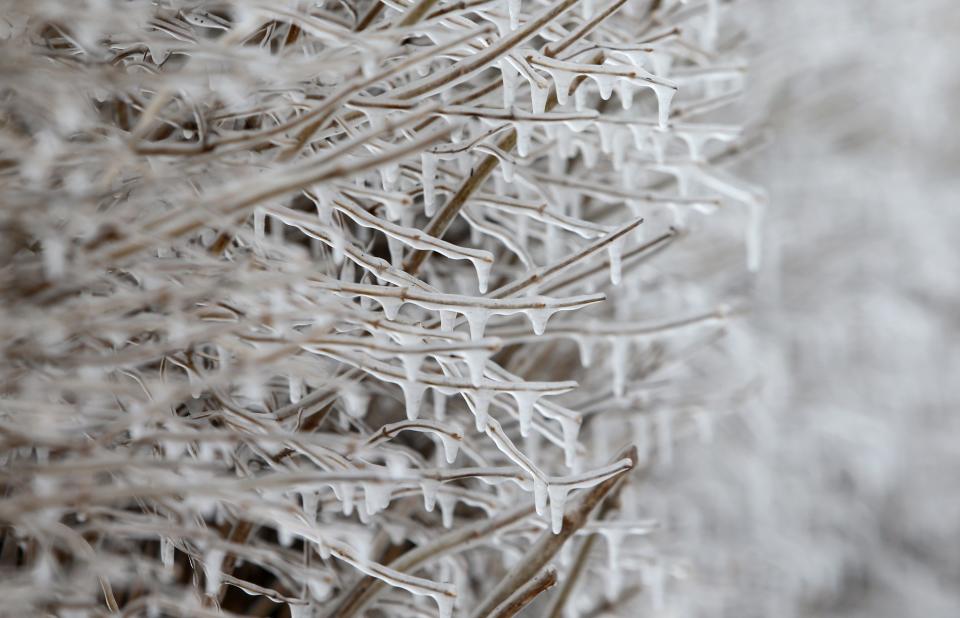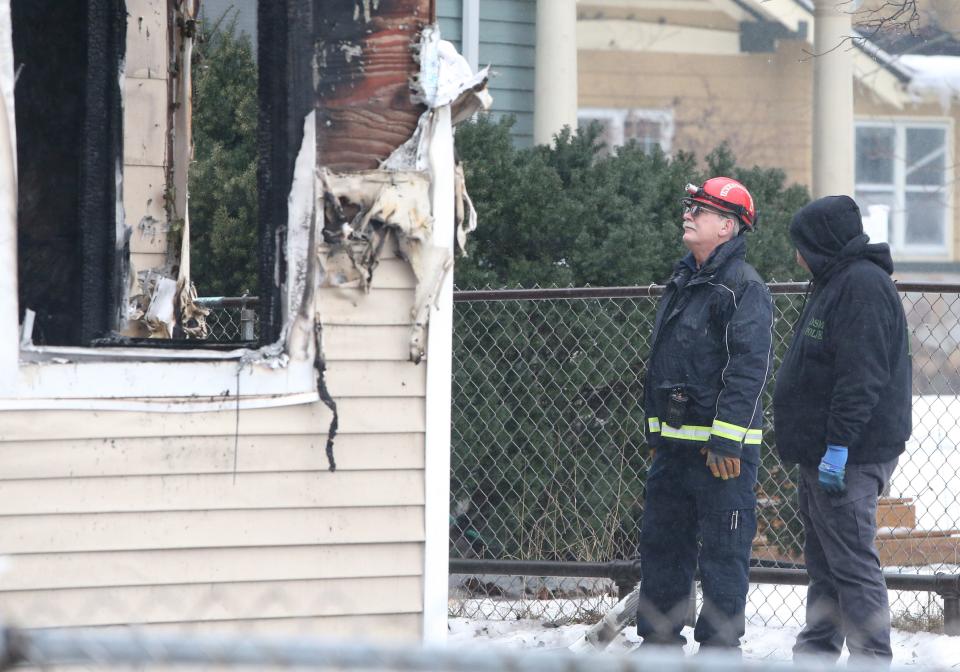Wind 'can contribute to explosive fire growth.' Here's how firefighters respond.

SOUTH BEND — As fire crews from the South Bend Fire Department's Engine 2 faced the raging residential fire at 222 N. LaPorte Ave. on Jan. 21, the winter winds produced challenging conditions.
"The inclement weather, the brutal winds, have been raging through our area for the last few days," South Bend Fire Department Chief Carl Buchanon said at a press conference Monday, Jan. 22, following the incident the previous evening.
“Cold temperatures can affect our fighting," South Bend Fire Department Spokesperson Suzie Krill said, noting the 16-degree weather that night, but “wind can be our enemy. It pushes the fire.”
What we know: Catch up with all The Tribune's coverage of the LaPorte Avenue house fire that killed five
Matt Englebrecht, the Chief Meteorologist at WNDU-TV, the Tribune’s reporting partner, agreed that strong winds can make fighting fires very difficult because of an increase in oxygen.
"On that night," Englebrecht said, referring to the fire whose death toll reached six Friday morning, "the wind strength wasn't noteworthy."
"Based on the data out of South Bend International Airport," he said, "we had a southerly wind at 5 to 10 mph with no wind gusts above 10 mph."
But in terms of putting out a fire, Matthew Dhoorey, Operations Chief at Clay Fire Department, said any wind that's five to 10 miles per hour is considered a wind-driven event and it's not very often South Bend doesn't have them.
“Wind plays a large effect in what we do,” Dhoorey said. “It can affect the flow path of the fire and push the fire in.”
To attack a fire in wind-driven events, Clay Fire uses charged water hoses to attack the fire from the unburned side rather than taking the flames head on. They find a position “away from the exhaust portion of the fire," where the smoke is escaping, Dhoorey said.

Meteorologists weigh in
Other extreme weather conditions can contribute to the spread of a fire.
“In the summer, extreme heat can dry out fuel, removing moisture from grass and trees and making the fire more readily burnable,” said Rachel Cobb, a meteorologist with the National Weather Service. "This contributes to wild fire growth."
In drier climates, “spotting” can occur, Cobb said, where the wind can pick up embers, causing them to fly and ignite dry grass.
“A spot fire can jump a quarter mile from the main embers,” she said.
In the winter, fires aren't considered contained until there's snow on top, Cobb said. Fires can go dormant in the winter and pop back up in the spring.
However, cold weather doesn’t necessarily fuel fire, she said.
“It’s more dependent on wind,” Cobb said. “Wind is one of the main factors that determines how fast fires grow and can contribute to explosive fire growth.”
Cobb described foehn winds as down-sloping winds found on the backside of mountain ranges that can accelerate fires, she said. In California, these are the Santa Ana winds, and in Colorado, it’s known as a Chinook.
Local meteorologist Engelbrecht said this air mass, this wind, is very dry.
"The drier the air mass, the easier it is to evaporate moisture back into it," he said. "So, if the area on the lee side of a mountain is already in a drought, a foehn wind will exacerbate the situation by continuing to evaporate any moisture out of the vegetation."

The investigation continues
The South Bend Fire Department is working collaboratively with the South Bend Police Department and investigators with the Indiana Department of Homeland Security to investigating the cause of the blaze.
"They successfully managed to suppress a significant portion of the fire on the first floor, before moving on to the second floor," Buchanon said at the press conference. "I couldn't be more proud of our men and women in doing what they do and what their calling is."
This article originally appeared on South Bend Tribune: Fire departments discuss fighting fires fueled by high wind conditions

